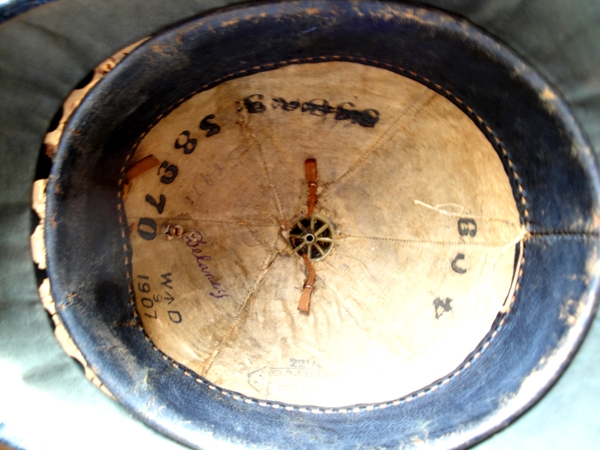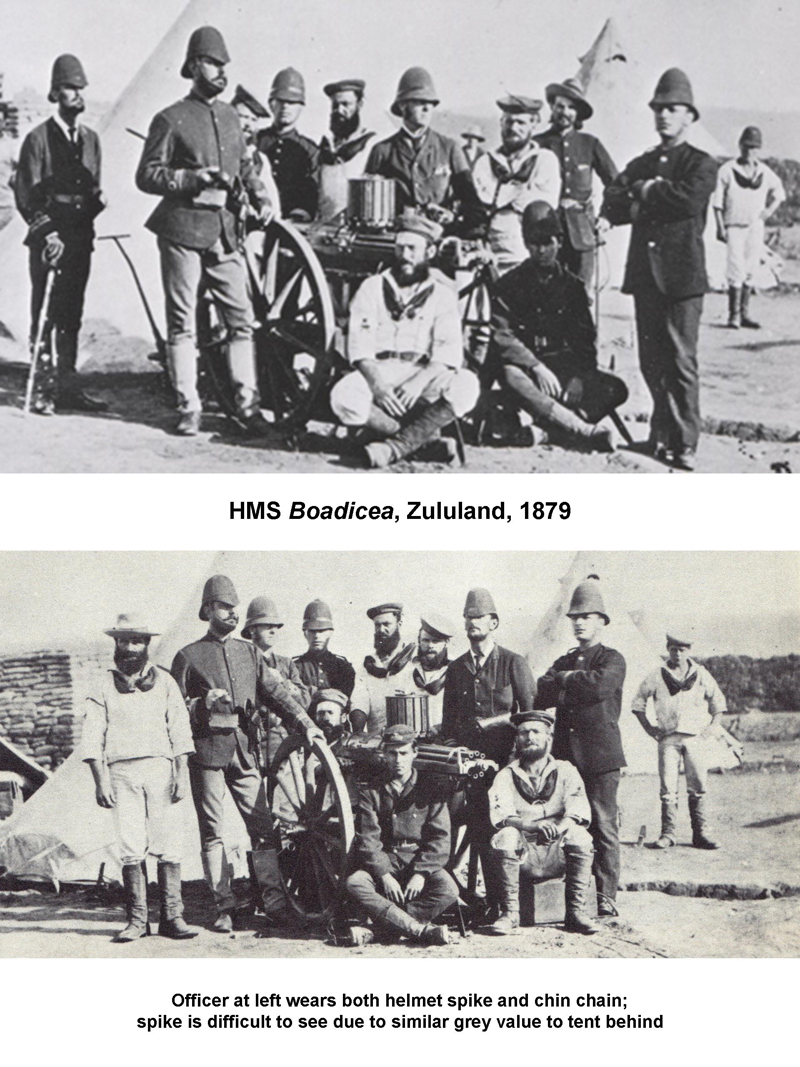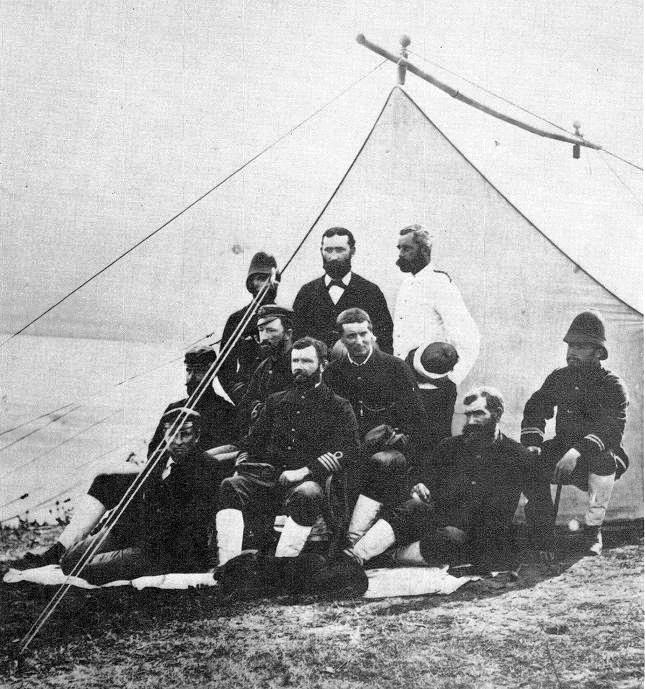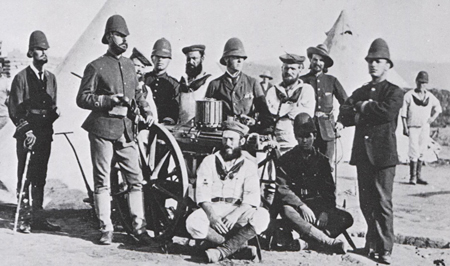
Royal Navy Officers wearing blue helmets. Far right of the photo shows a seaman also wearing the blue helmet. (Photo courtesy National Army Museum)
I must state at the outset that this article was inspired by Tim Reese (Tim’s website) who questioned my description of the blue helmets worn by the Royal Navy as being standard Foreign Service Helmets with blue cloth covers (see Sun Helmets in the Royal Navy). On closer inspection that is obviously not the case. They are blue cloth helmets in their own right. Tim and I are in disagreement as to the “flared” helmets worn by two of the officers: Tim positing that they are the product of rough wear and storage; I say that they are too symmetrical and in good condition for that to be true. It remains a moot point.
However, the use of these blue helmets during the Zulu War of 1879 is a mystery and one which we hope readers can shed some light on. The officer, second from left, seems to be sporting not only a chin chain but also the spike. The shape is reminiscent of a Foreign Service Helmet/Home Service Helmet but does not appear to be either one. The former was officially introduced in 1877 but was in use years prior to that date. The latter was introduced in 1878 but totally unsuited to wear in hot climates. Indeed, the Headdress Committee Report of 1896/7 contains many complaints as to the ventilation of those HSH helmets. In later times we see corrugated cork spacers used but in a minimal way.
It is interesting to note that the helmet worn by the officer with chinchain seems to be of a four panel construction but the photo is too indistinct to be definitive about this. Both the FSH and HSHs were made in four panels but the FSH almost always had six panels.
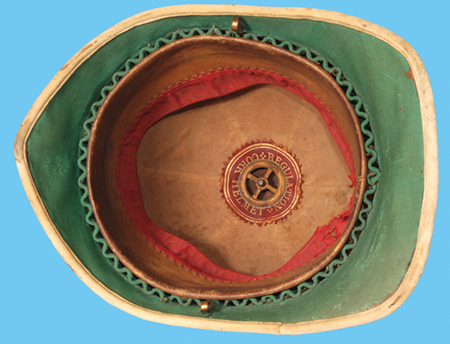
The corrugated buckram ventilation most often found in officers’ Foreign Service Helmets (Collection of Peter Suciu)
Tim says, “The term ‘Naval Brigade’ is frequently misconstrued. When a ship’s complement of seamen and Marines were mustered for operations ashore it was deemed a ‘Brigade’… In contrast the Army viewed such as a composite of all ships’ complements organized for land service.”
“The blue helmet appears again to a greater degree in two concurrent images of officers and seamen of HMS Boadicea gathered about a Gatling Gun.”
Another photo shows RN and Royal Marines (HMS Active) sporting blue helmets but with the RM officer having a white puggaree to his helmet.
This to collectors and researchers is a conundrum but we hope that others interested in the subject will be able to “weigh in.”
Here I must acknowledge the invaluable assistance provided by Tim Reese (http://www.reeseartofwars.com/) without which this article would not have been written.
Stuart Bates

